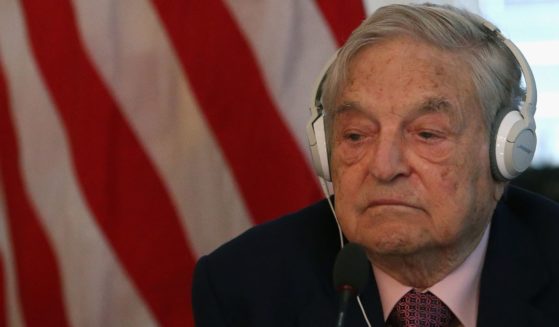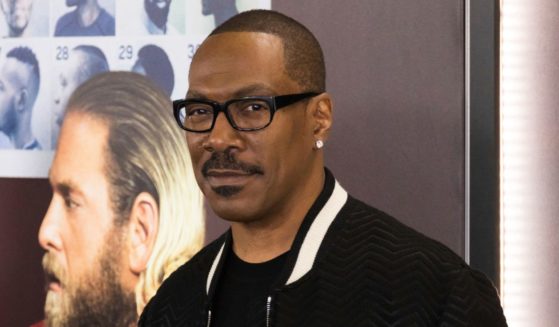Even Obama's Econ Adviser Wakes Up, Warns Americans of Unimaginable 'Next Few Years'
The 1970s are back, but in the worst way possible.
With the Federal Reserve’s policy meeting to address the current inflation crisis, former Obama economic adviser Lawrence Summers has grimly predicted that the Fed’s current policy trajectory will push the U.S. into a new era of stagflation.
Stagflation is defined as a period where there is a combination of slow economic growth — stagnation — and high inflation. The indicators of impending stagflation are slow economic growth, high unemployment and increasing prices.
The last time the U.S. saw serious stagflation was in the 1970s, when the Organization of Petroleum Exporting Countries put an oil embargo on the U.S. in 1973 and the Federal Reserve had irresponsible policies that left inflation unchecked.
This seems to be the economic territory that the U.S. is headed for once again.
In an Op-Ed for the Washington Post published March 15, Summers said that the Fed is operating with dangerous policies and has been for years.
“I believe the Fed has not internalized the magnitude of its errors over the past year, is operating with an inappropriate and dangerous framework and needs to take far stronger action to support price stability than appears likely,” Summers wrote. “The Fed’s current policy trajectory is likely to lead to stagflation, with average unemployment and inflation both averaging over 5 percent over the next few years — and ultimately to a major recession.”
Now with the soaring inflation rates, the Fed’s current policy meetings have the goal of driving down inflation to the optimal two percent.
However, as Summers pointed out, the Fed has been awful in its predictions and actions against inflation.
“A year ago, the Fed thought inflation would be in the 2 percent range for the next year. Six months ago, it was expressing optimism that inflation was transitory. Two weeks ago, it was still buying mortgage-backed securities even as house prices had increased by more than 20 percent. No explanation has been offered for these rather momentous errors,” he wrote.
“So there is little basis for confidence in the Fed’s assessment of inflation risks,” Summers added.
Already, Americans have been watching all the ingredients that make up stagflation grow over the past year.
Inflation has grown worse and worse. At the beginning of 2022, inflation had already climbed to 7.5 percent, hitting a 40-year high, Market Watch reported.
The Bureau of Labor Statistics reported that in February the unemployment rate was 3.8 percent.
Prices have been skyrocketing for all goods. In the last 12 months, the consumer price index has increased 7.9 percent. The gas price index increased 6.6 percent in February. The food price index rose 1.0 percent, the Bureau of Labor Statistics reported.
Put all these indicators together, and the signs point to stagflation. But the Fed is about to make it worse.
The Fed is scrambling to fight inflation by hiking interest rates. Raising interest rates naturally slows down the economy by making borrowing more expensive, which pauses investors and businesses from making investments. This then reduces the demand in the economy, which is supposed to pull down prices.
However, hiking interest rates will likely lead to increases in unemployment, another factor to make stagflation even worse.
“There can be no reliable progress against inflation without substantial increases in real interest rates, which mean temporary increases in unemployment. Real short-term interest rates are currently lower than at any point in decades,” Summers wrote. “They likely will have to reach levels of at least 2 or 3 percent for inflation to be brought under control. With inflation running above 3 percent, this means rates of 5 percent or more — something markets currently regard as almost unimaginable.”
So there we have it, the “quadfecta” that leads to stagflation: Inflation is through the roof, prices are high, unemployment numbers are bad and likely to grow worse with interest rates rising and the Fed is about to slam the brakes on the whole economy.
The Fed is trying to correct inflation without addressing all the other issues, which will just lead to more problems and, likely, stagflation. It’s like when you finally get around to that paint project in your house that’s been put off for two years. Except the rest of the house in on fire. And the paint is laced with gasoline.
“To avoid stagflation and the associated loss of public confidence in our country now, the Fed has to do more than merely to adjust its policy dials,” Summers wrote. “It will have to head in a dramatically different direction.”
But until the Federal Reserve does do a massive correction — which is just not likely — welcome back to the 1970s.
The terrifying thing about stagflation from the 1970s is that everyone looks back to how long it took America to recover and are worried it could happen again.
“The worst part of the experience from the 1970s was the aftermath,” Richard J. DeKaser, EVP and chief corporate economist at Wells Fargo & Co., told Business Insider. “To reverse the momentum of ever-higher inflation, a severe recession was required (1981-82), and it took over a decade to wring out the fears of an inflation resurgence. It wasn’t until the 1990s that investors began to seriously discount such a threat.”
So be prepared for further economic downturn.
Truth and Accuracy
We are committed to truth and accuracy in all of our journalism. Read our editorial standards.












